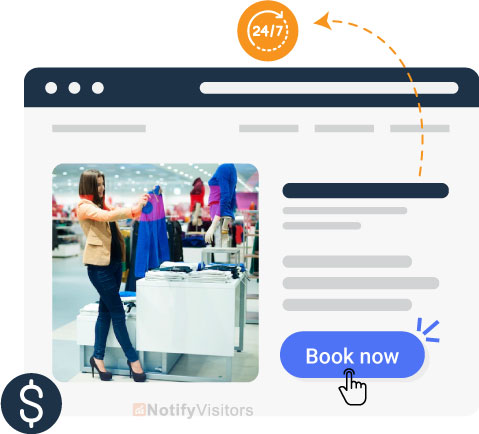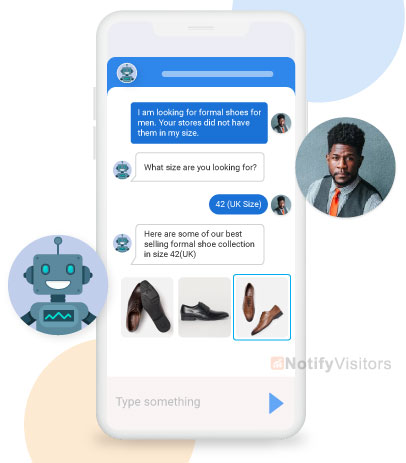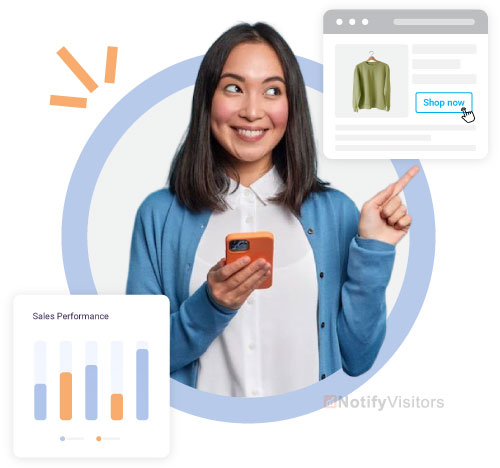Whether you already have an e-commerce store or are planning to open one in the coming months, it is important to give your customers the best experience. It is especially true due to the unprecedented growth of e-commerce sales worldwide in recent years.
The two marketing trends that all businesses can expect in 2025 are change and innovation. Online and in-person transactions are faster than ever. Technological innovation is leading this charge. Consumer expectations are also changing.
To stay ahead of the curve, companies must be aware of the marketing trends affecting their success. Embracing this change will help retailers succeed this year and beyond.
We have gathered the latest eCommerce trends for 2025 and presented them in an easy-to-follow guide.
Latest eCommerce Trends for 2025
Contents
1. Social Media Marketing

One of the latest eCommerce trends on our list is Social Media Marketing. Some of the most successful eCommerce brands are shifting their marketing efforts to social media like Facebook and Instagram. They are using these platforms as their primary tool for direct marketing.
Some advertising platforms (like Instagram) can now sell directly to customers without leaving the site.
Today, marketers use social media more than ever to connect and find new brands. By focusing more on strategic advertising, your company can take advantage of this trend.
2. Personalization
It doesn’t matter if you are part of the B2B or B2C industry; your audience will expect a degree of specificity. Whether you use it in your marketing or increase it and install it on your eCommerce site, it can also help you increase sales.
In 2025 and beyond, eCommerce brands will use data for more than just information. Instead, online stores will use customer information to improve their services or expand their products and know where and how to improve the customer experience.
You can offer eCommerce personalization in the following ways:
- Deliver personalized shopping based on your customers’ needs.
- Include product recommendations in your email marketing or send your customers valuable information about products they’ve already purchased.
- Create content that you share through video.
- Provide a free guide on how a product can solve your customers’ challenges.
3. Appointment booking in-store

Appointment shopping allows consumers to book time in-store to browse products. It is an example of a sales pitch. It allows for greater customization and a great customer service experience.
Customers can book in-store purchases through the retailer’s website. Once there, they are treated as guests and can explore and try products with the help of a host. You can include QR codes on the products to search for and buy later simplifying the process by using a QR code generator for efficient code creation.
Or, if a customer doesn’t like shopping at a brick-and-mortar store but doesn’t want to deal with the hassle of shipping and logistics, they book an appointment to buy online and pick it up at the store.
4. Focus on the customer experience
More than ever, focusing on the total customer experience is paramount. With so much competition online, offering poor customer service is almost guaranteed failure. If a customer has a bad experience on your website, there’s a good chance they won’t come back.
eCommerce businesses now need to focus on improving the overall shopping experience of their customers. It means making sure things are easy to find and easy to buy.
The most successful brands also focus on improving the post-purchase experience. It is therefore extremely important to improve customer experience.
When it comes to your brand, your prospects expect quality in everything. Your logo design, tagline, and even the way you write the CTA are important to the customer experience and ease of payment and shipping. Make sure you create excellence in everything related to your brand. Also, focus on building a great fulfillment center to enhance operational efficiency and further elevate our brand reputation.
5. Custom packaging will be more popular
As mentioned, exclusivity and continuity will be more important to consumers in the future. With the help of special plugins, e-commerce brands can respond to all these trends.
Online stores, for example, can ensure that their packaging is acceptable. Or how about surprising them with a personal touch, like a handwritten note thanking them for their purchase?
According to Ipsos, more than 70% of Americans agree that packaging design influences their purchases.
6. Omnichannel Marketing

To remain competitive, retailers must integrate in-store and online.
Omnichannel shopping is evolving rapidly. Customers want to be able to search online and buy in-store.
Marketers must provide integrated online and offline experiences, and these two must revolve around each other.
7. Voice Shopping
It’s no secret that voice search has been on the rise in recent years. This trend will only continue with the global availability of voice assistants and similar devices.
For e-commerce, more consumers are expected to continue using voice assistants to search for products online. Major online shopping platforms (such as Amazon and Walmart) already offer voice search capabilities, which will likely become the norm in the coming years. It is proven to be an effective way to earn profits.
8. AI Chatbots will become more common

More and more online shoppers are interacting with chatbots.
Consumers now expect 24/7 customer support. So if you want to keep your e-commerce business up to date with changing times, using a chat platform that can answer customer questions automatically will be a great investment.
As more and more e-commerce companies adopt AI chatbots, the conversion of chatbots will also improve. Indeed, design is expected to become increasingly complex, and interactive AI may eventually become the new customer experience standard.
9. Transparency in shipping
Delivery speed, cost, and transparency are the top three business trends in 2025.
Now, very fast and free shipping is required. Keeping delivery promises is also important for attracting and retaining customers. You consider a list of top apps for delivery and select the best one to make your delivery on time
To ensure transparency, a company may do the following:
- Set clear and realistic expectations for delivery times
- Ensure that customers can track the status of on-demand deliveries
10. Payment processing will be easy and fast
Payment processing is a common pitfall for online shoppers. If you’ve ever had trouble finding an online payment method, you know how frustrating it can be.
In the coming years, providing high-quality payment processing capabilities will be more important than ever to the customer experience.
You can reduce the cart abandonment rate, increase sales, and improve the overall customer experience by making purchasing products from your e-commerce site easier. To improve payment processing, brands should focus on adding as few steps as possible to the checkout process.
11. It will be necessary to pay more attention to data protection
While providing a personalized customer experience is key, it shouldn’t come at the cost of giving up a lot of personal data. Marketers must carefully consider what personal information they need to collect and how to access and use it.
Make sure to capture the customer’s payment details and add them to your first-choice email list.
12. Mobile shopping will increase sales

Today, mobile phones are rarely used to make calls. Instead, we grab our phones to keep up with the latest deals.
According to Statista, by 2021, 72.9% of all retail e-commerce will be done through mobile transactions.
So, if your eCommerce site is no longer mobile-friendly, you could miss out on a great market. Moreover, this market segment will only grow in the coming years.
13. Sustainable shopping
Sustainability and eco-friendly practices are the future of online shopping. It is becoming increasingly important everywhere, but especially with millennial shoppers. In particular, today’s shoppers choose to buy from online brands that put sustainability first in manufacturing, delivery, packaging, and other aspects. Partnering with pick and pack warehouse services that prioritize eco-friendly practices can significantly contribute to reducing carbon footprint and meeting consumer expectations for sustainability.
More than ever, e-commerce companies need to focus on being more sustainable and bringing those efforts to consumers.
14. Influencer Marketing
Many businesses today work with influencers. In addition, most respondents have a generally positive view of influencer marketing.
When working with an influencer, the goal should be to create everything your target audience finds valuable. So think bigger than just advertising in 2025 and beyond.
15. Providing 24/7 customer service
Consumer expectations for customer service are higher than ever. Positive and negative experiences can influence the likelihood of a repeat referral.
But customer service doesn’t only have to be good. It should also always be available.
By providing reliable 24/7 customer support, they improve their relationship with their customers. And more importantly, they can alleviate the frustration caused by problems they have no control over.
AI chatbots can provide 24/7 customer support by answering frequently asked questions in multiple languages.
16. Recognizable and familiar stories
Today’s consumers also want a personal connection with their online purchases. They are more likely to buy if the product tells a story. When creating content for a product to sell online, it’s important to focus on well-written stories that are relevant, meaningful, and truly useful to your audience.
With that in mind, it might be time to revisit and update those product pages and some product descriptions to grab your customers’ attention.
17. Live purchasing will increase
Live shopping is becoming increasingly popular.
It can also be very helpful in online shopping. Because this allows customers to see your product in real-time, it provides another form of social proof. And since they also have the opportunity to ask questions, this can further help personalize the overall customer experience.
18. Digital data is becoming a requirement
The boom proves how important internet advertising is today. With the rapid growth of the e-commerce market, competition will increase. To stand out online, businesses must pay more attention to advertising data.
19. User Generated Content Will Increase
User-generated content (UGC) will continue to grow. Users will become content creators. By partnering with an influencer, e-commerce brands can create authentic content that builds brand awareness.
Remain up to date with eCommerce trends today
The world of eCommerce is constantly evolving and changing, which makes it difficult to stay up to date. But if you want to keep your brand relevant while providing the best shopping experience for your customers, it’s important to keep up with the latest changes in the industry.
As we approach 2025, we can expect these eCommerce trends to emerge. From sustainability and customer experience to new approaches to social marketing and voice shopping, many exciting things are happening in e-commerce.
With eCommerce driving this trend, it’s easier for brands to improve the customer experience at every level and stay relevant for the long haul.
FAQs
1. What are customers looking for in B2B e-commerce?
Customers are looking for companies that provide specific and personalized content in emails, sales offers, or processes.
2. What is expected out of e-commerce in the coming years?
E-commerce companies are expected to grow unprecedentedly in the coming years. It indicates that there is still a trend toward a future surface with no signs of collapse.
3. How can I be benefitted from the eCommerce system?
Stay informed about what your customers are looking for, the latest industry trends, and e-commerce information. Use Web Analytics to understand detailed information and gather all the data you need to create a successful eCommerce strategy.

























 Email
Email SMS
SMS Whatsapp
Whatsapp Web Push
Web Push App Push
App Push Popups
Popups Channel A/B Testing
Channel A/B Testing  Control groups Analysis
Control groups Analysis Frequency Capping
Frequency Capping Funnel Analysis
Funnel Analysis Cohort Analysis
Cohort Analysis RFM Analysis
RFM Analysis Signup Forms
Signup Forms Surveys
Surveys NPS
NPS Landing pages personalization
Landing pages personalization  Website A/B Testing
Website A/B Testing  PWA/TWA
PWA/TWA Heatmaps
Heatmaps Session Recording
Session Recording Wix
Wix Shopify
Shopify Magento
Magento Woocommerce
Woocommerce eCommerce D2C
eCommerce D2C  Mutual Funds
Mutual Funds Insurance
Insurance Lending
Lending  Recipes
Recipes  Product Updates
Product Updates App Marketplace
App Marketplace Academy
Academy

